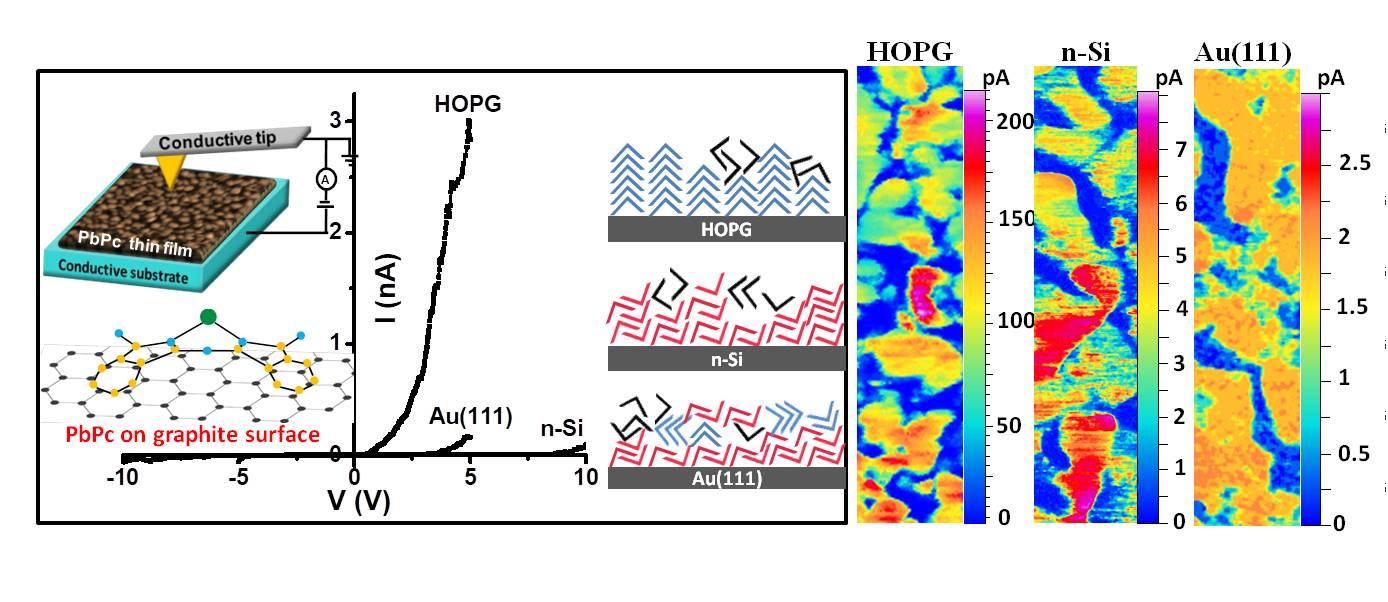Nanoscale Conductance in Lead Phthalocyanine Thin Films
K Priya Madhuri, P. Kaur, Md. Ehesan Ali and Neena S John,
J. Phys. Chem. C 2017, 121, 9249

The influence of crystalline phase and disorder on vertical charge transport in nonplanar metallophthalocyanines is studied by depositing thin films of shuttlecock molecules, lead phthalocyanine (PbPc) on various substrates such as highly oriented pyrolytic graphite (HOPG), silicon, and gold and investigating the structural and electrical characteristics of the films. The films represent three cases of crystalline packing such as monoclinic, triclinic, and disordered phases, directed by the substrate-molecule interactions and intermolecular interactions. Vertical charge transport in the films is studied by employing C-AFM. It is revealed that the monoclinic phase of PbPc on HOPG exhibits two orders of magnitude higher conductance than silicon or gold and is related to the ordered stacking of the macrocycles through which the charge transport is facilitated. Local conductance mapping reveals inhomogeneity among conducting domains and is correlated with the grain structure. The charge transport is best fitted with tunneling mechanism for nanoscale and space-charge-limited current for bulk measurements. The presence of humidity is also shown to influence the nanoscale charge transport with enhanced conductance. Under saturating humidity conditions, the conductance is found to decrease. This study emphasizes the implication of graphite or graphite-like platforms that promote the ordered stacking of delocalized molecular systems for enhanced vertical charge transport.
